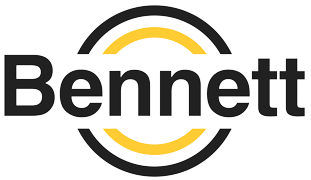Preventing headaches with Preventative Maintenance
In this blog let’s look at planned preventative maintenance from an outsourced engineer’s point of view to see if it helps you get to where you need to be in your manufacturing site.
How good is your routine?
First off, let’s all assume that everyone is aware of what preventative maintenance (or PPM) is or let’s just simply say it’s a schedule or routine for your maintenance.
One of the first questions that our engineers might ask is “what is your maintenance routine?”.
If you’ve got a great Gantt chart but nothing in practise, there’s an issue.
If you’re running around fixing things all the time as and when they break with no routine or schedule ever created, there’s an issue.
If there’s continual interruption to your operations because reactivity is the name of the game, there’s an issue.
If you just take for granted your machinery, services and equipment will just work every day no matter what, there’s an issue.
Now as engineers who’ve worked in busy production environments our team gets all the above. Sometimes the order book is just stacked so taking time to switch off a bit of kit is not the top priority of the operations manager.
The thing is wear and tear happens in manufacturing environments, these machines are full of moving parts and services are used regularly, sometimes 24/7. From an engineers perspective the better the maintenance the better the equipment will work and our golden hammers can stay in the toolbox.
What if it saved you money?
Let’s take the services in your building to begin with; the dripping tap in the gents, the heater that can’t be adjusted so blasts out really hot air, the area that needs plug in lighting as the ceiling lights are out of action.
By implementing PPM for your critical services not only will your bills reduce but you’ll improve the safety in your factory too and more importantly you’ll be conserving previous resources like water and electricity.
Now onto the equipment and machinery you are using in your production processes. If they are running efficiently and effectively because all moving parts are working at the optimum level, there’s going to be some good outcomes. Like increased throughput which can potentially bring down the unit cost of production or less energy consumed because you’re making things faster. Reducing downtime is a key focus area for many production people which is only possible with new installations, machine modernisation AND preventative maintenance.
As engineers the team have often seen reactive repairs take longer than expected, be far more expensive than expected or worse an entire new installation is needed because things just haven’t been looked after. That’s not the report you want to submit to the board!
It will reduce your headaches
Whether you give it the full title of Planned Preventative Maintenance or just get some schedules in place to make sure things are greased, parts like O rings are not worn, bolts are all tight, things are not leaking, everything is moving as it should. All of those things are going to ensure you don’t have plant failure. Because that is everyone’s migraine right there.
By conducting maintenance on all the business-critical bits in your building(s) you’ll ensure you avoid reactivity, avoid high costs and avoid not fulfilling orders on time and in full. Every operations director wants to present highlights back to the board and that’s doable with PPM in place.
If all this sounds like a headache to you or you’ve just not managed to get the right schedule working then let us be your paracetamol. A site tour and conversation with the entire operations team will enable John and Craig to see exactly what’s going on when and how.
Call us on 01332 419 220 or email info@beneng.co.uk if you’d like to talk about any aspect covered in this article.


